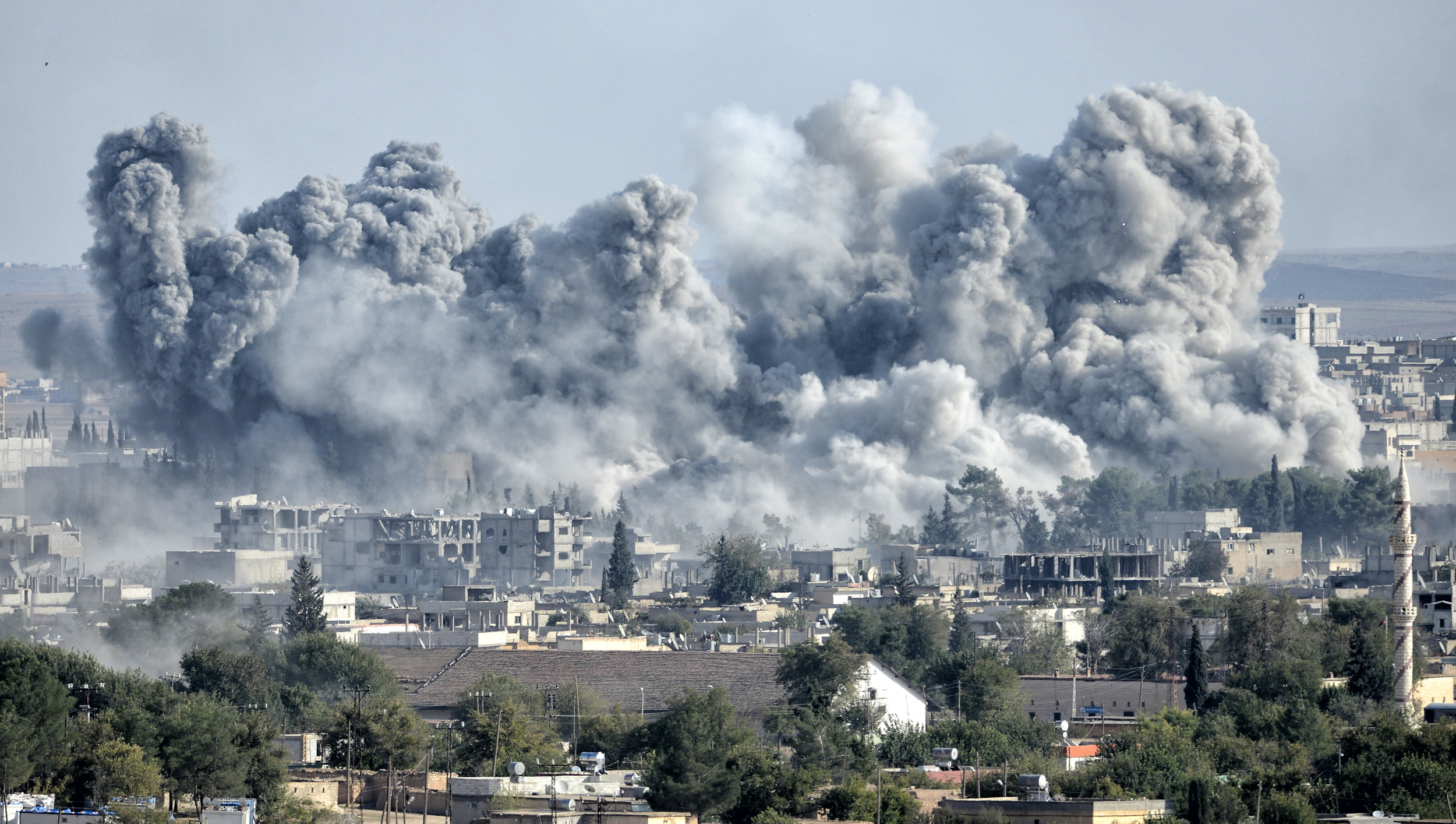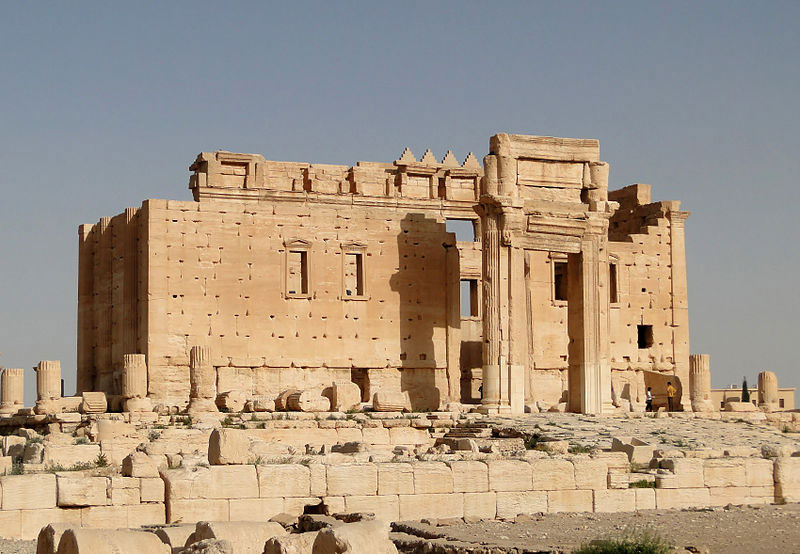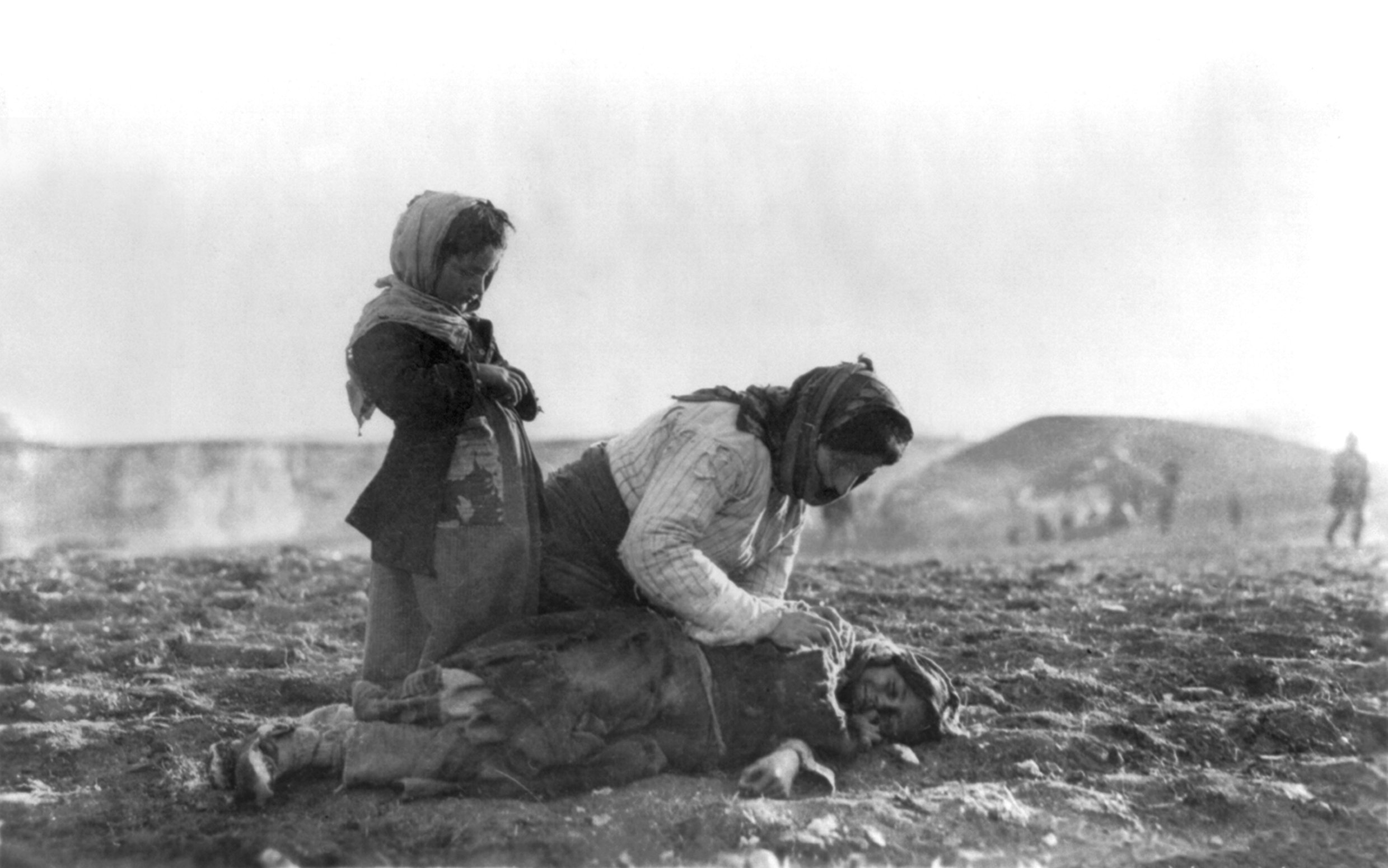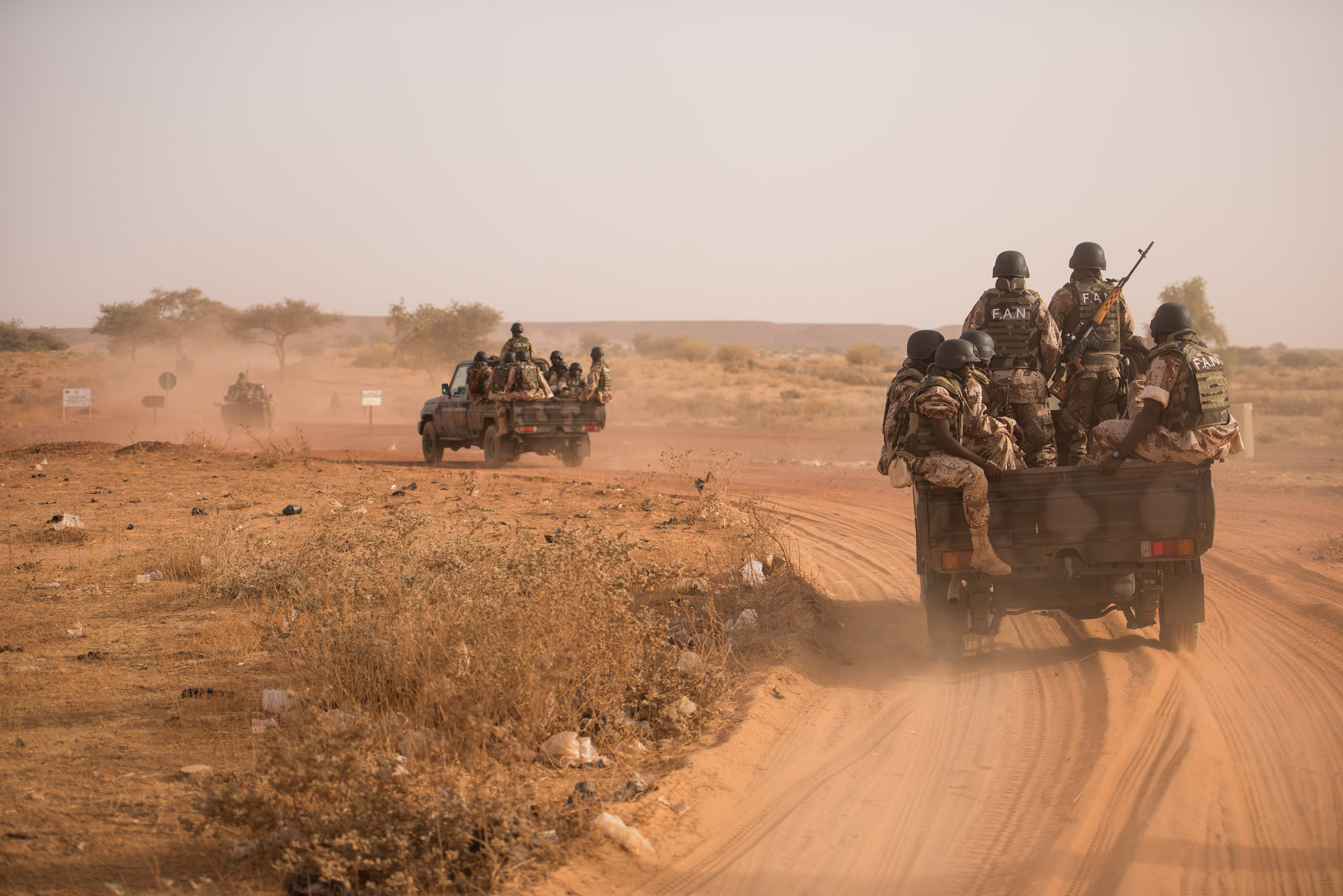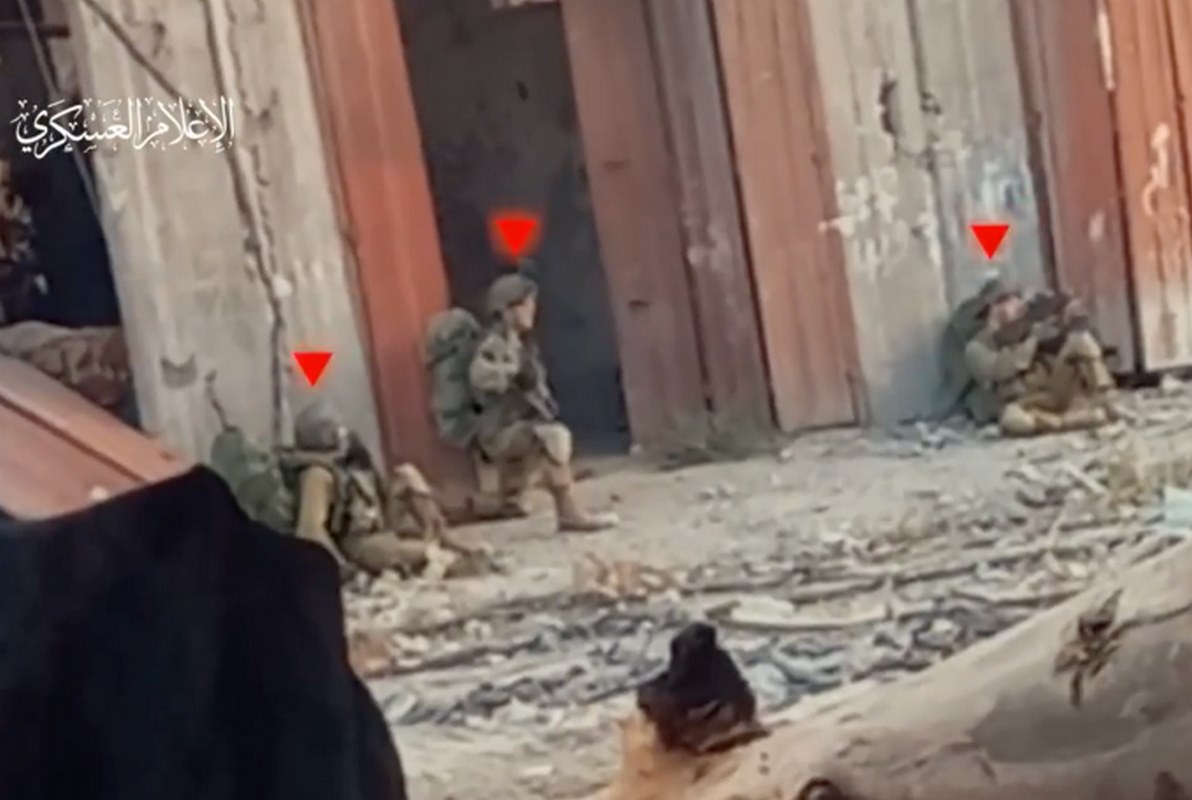PICTURED: The eternal flame at the Tsitsernakaberd Memorial in Yerevan, Armenia, on Armenian Genocide Remembrance Day 2014. Photo credit Wikimedia
The Merriam-Webster definition for genocide is “the deliberate and systematic destruction of a race, political or cultural group”. The inheritors of the once-Ottoman now-Turkish state responsible for the Armenian Genocide still dispute the genocidal charges even 100 years after the events.
Genocide can be a culturally defining event. The Gallic peoples of France, after suffering what could certainly be called genocide at the hands of Julius Caesar, would only emerge from the shadow of Rome as a regional power once more 600 or so years later during the reign of Pepin of Herstal, the great-grandfather of Charlemagne.
Fast-forward to modern times and after 18 years of warfare across the Middle-East, South Asia, and North Africa, World at Large investigates whether the human cost of the Global War on Terror might be so high as to be remembered by our descendants as genocide.
PICTURED: An explosion after an apparent US-led coalition airstrike on Kobane, Syria, as seen from the Turkish side of the border. Credit Orlok.
The Dead
World at Large reports that the Global War on Terror has killed or wounded 1,321,955 people, the overwhelming majority of which were Muslims. The figure also includes international aid workers, journalists, American military personnel, etc. This number was based on reported casualties alone.
World at Large calculated the loss of life using a large number of reports that tallied only the dead. Most of the casualty figures from 2019 consisted of traditional wartime casualties, i.e. dead, wounded, missing, and captured. All sides’ casualty figures were recorded, and no classification was excluded i.e. political killings, assassination, traditional warfare, suicide attacks, summary executions by U.S. backed state forces, etc.
The criteria consisted of any Muslim country to face significant U.S. aggression after the September 11th attacks, consisting mostly of Iraq, Afghanistan, Syria, Yemen, Libya, and Pakistan.
Sources include Brown University’s Cost of War studies, reports from the United Nations, ACLEDATA, Amenity International, Syrian Human Rights, iraqbodycount.org, and MIT, as well as over 100 articles published over the last 18 years in journals such as the New York Times, Al Jazeera, and Reuters.
Will history remember this as a war, genocide, or both? While the United States’ and her allies aren’t deliberately targeting Muslims for the purpose of cultural or ethno-destruction, the consequences of the broad, sometimes vague, and indefinite commitments and objectives that have run the gamut from counter-insurgency raids to nation building have had an indirect effect considerably similar to genocide.
In Iraq, the reported civilian deaths alone can tally as many as 206,273. Iraqbodycount.org and Brown U’s Cost of War reminds us that governmental infrastructure is limited especially in wartime, and so the mass death in Iraq, as well as all of the countries included, is only that which has been reported.
The actual number of casualties could be as much as double the original figure – In Iraq and elsewhere, however it’s impossible to tell. Many of the sources used would seem to indicate that it’s very likely the death count is higher.
In Syria, all-faction casualties are over half-a-million, with 1600 civilians killed by U.S. airstrikes in the city of Raqqa alone.
In Yemen, the United Nations Development Program reports that 233,000 people have died since 2015 of which 131,000 have been from disease and starvation.
PICTURED: A close-up view of the Za’atri camp in Jordan for Syrian refugees as seen on July 18, 2013, from a helicopter carrying U.S. Secretary of State John Kerry and Jordanian Foreign Minister Nasser Judeh.
The Displaced
“The population of historic Armenia at the eastern extremity of Anatolia was wiped off the map. With their disappearance, an ancient people which had inhabited the Armenian highlands for three thousand years lost its historic homeland and was forced into exile and a new diaspora. The surviving refugees spread around the world and eventually settled in some two dozen countries on all continents of the globe,” states Armenian-genocide.org.
As the writer points out, death isn’t necessarily the only ingredient to genocidal acts. The deliberate destruction of a race or culture is greatly helped by depriving said culture of their ancestral home as the Ottoman’s did to the Armenians a little more than a century ago.
The genesis of Europe’s refugee crises has been the disastrous wars across the greater Middle-East, as millions of people flee their homes to avoid the violence. Mass exoduses have occurred all across the Middle-East in staggering numbers.
World at Large reports that between the six countries there are roughly 8,210,400 internationally displaced persons (IDPs) who once lived in and around the conflict zones. The bulk of these people originate in Syria, as it’s estimated that between 5.6 and 6.6 million people have fled the incredible violence within the Near-Eastern country.
Continue Reading — Amid Murky Waters, 400 Sign Letter Stating War In Syria Should Continue
While having suffered the lowest number of war-time casualties of all the included countries, Libya may have as many as 32,000 IDPs. Afghanistan has had at least 205,000 people displaced by flooding in Kandahar and Helmand.
While Syrian President Bashar al-Assad and Russian President Vladimir Putin should be held responsible for a large amount of the killing, Syria is one of the most multi-faceted conflicts in the greater campaign for the Middle-East.
Assad brutally oppressed his countrymen during the Arab Spring demonstrations, while the United States became involved for the combined reasons of pursuing ISIS and ISIL to the ends of the earth, protecting their Kurdish allies in the northeast, and as part of the eternal struggle to limit Iranian-Shi’ite power in the region by backing rebel groups including al-Qaeda against Assad’s military forces.
PICTURED: The Temple of Bel which the Islamic State has destroyed through explosives.
Cultural Devastation
As Merriam-Webster defines genocide as the deliberate destruction of a race, political, or cultural group, it would be impossible to quantify the damage done to the Middle-East without examining the cultural devastation resulting from such wide-spread campaigning by the United States.
“Our war on terror begins with al Qaeda, but it does not end there. It will not end until every terrorist group of global reach has been found, stopped and defeated,” said President George W. Bush as he addressed the nation after 9/11.
Such a war has seen American boots tramp across the cradle of civilization, retracing the steps of history’s greatest conquerors across some of the oldest continually-inhabited land on the face of the earth. In the footsteps of Alexander the Great, the United States crossed the deserts of Anatolia and landed in Afghanistan, home to an ancient and unconquered people recently free of Russian occupation.
At al-Qaeda’s flight from Tora Bora the U.S. pursued them, as Alexander once did, all the way to Pakistan – to the edge of the Indus Valley and home to one of the oldest civilizations of mankind – half the world away from Manhattan. Upon Baghdad the U.S. Military unleashed fury as the Mongolians once did, devastating the ancient city and much of her relics and archaic buildings.
Returning east, the War on Terror took America to the Levant – bang in the middle of the cradle of civilization, and graveyard to the ancient world’s greatest empires – to fight against a most insidious enemy in the Islamic State. The damage the Islamic State did to relics and ruins of empires past represents another unquantifiable tragedy, as sites like the ancient Assyrian capitals of Nineveh and Nimrud were bulldozed or destroyed.
Created from Sunni rebel groups in the aftermath of the devastation in Iraq, the Islamic-extremists of ISIL represented the next logical step in the Global War on Terror which took the conflict to another level.
PICTURED: An Armenian child dead in the fields within sight of help and safety at Aleppo.
Can It All Be Called Genocide?
Let’s look at some of recent history’s most infamous genocides for comparison.
In April of 1994, racially-charged killings of the Tutsi tribal minority by moderate Hutu peoples of Rwanda quickly grew in scale until some 100 days later, around 500,000 Tutsi had been ethnically cleansed. Some estimates put it closer to 800,000 and even a million people killed, as well as another 2 million displaced.
During World War I, the old Ottoman Empire which controlled Turkey began the wholesale slaughter of Christian Armenians protesting for equal voting rights and an end to other discriminatory policies targeting Christians. Between 1894 and 1918, 1,000,000 to 1,500,000 Armenians were scoured from Anatolia, and as mentioned above, the remaining population was forced into diaspora.
During the breakup of the former Yugoslavian Republics, ethnic Serbs and Croats began the persecution of Bosniaks – a Muslim people who lived within modern-day Bosnia-Herzegovina at the behest of political leaders. The Bosnian Genocide which was ended after NATO intervened, claimed the lives of 200,000 ethnic Bosniaks.
Under the Khmer Rouge leader Pol Pot, 25% of the Cambodian population was killed. On July 25, 1983, the “Research Committee on Pol Pot’s Genocidal Regime” issued its final report, including detailed province-by-province data. The data showed that 3,314,768 people had died.
These horrible episodes in history have more in common with each other than they do with the Global War on Terror, because the latter has been waged across many different countries against many different ethnic groups. While the large majority of victims are Muslims, even within that designation there are distinct differences – Sunni and Shia to start.
However the safe haven myth has always been the United States’ stance on withdrawal from some of these nations, which one could ascribe to the fact that the conflict has always been religiously charged with all the fury, real or perceived, of hateful Sharia rhetoric and jihad that would certainly fit the criteria of a cultural persecution.
With 1,321,955 people dead or wounded, over 8 million who’ve become refugees, and wide-spread cultural devastation across the most anthropologically and historically rich region on earth, a genocide has likely been committed even though it lacks the systemic nature of the four tragedies mentioned above. An indiscriminate genocide perhaps.
With the number of unreported deaths since 2001 remaining a mystery, the chances are even greater that some sort of Muslim genocide has been and is still being committed.
14,000,000 people in Yemen are facing starvation at the hands of the Saudi-led, American-armed coalition, the conflicts in the Middle-East continue with no end in sight, Afghanistan’s economy is more dependent on poppy fields than ever before, and the very real possibility of a larger-scale war with Iran looms on the horizon.
A journalist might produce a very good article titled: The War on Terror has killed more people than the Armenian Genocide,” but in another 10 years, is there a chance that an article will be published with the title: “The Global War on Terror has killed more people than the Holocaust”?
